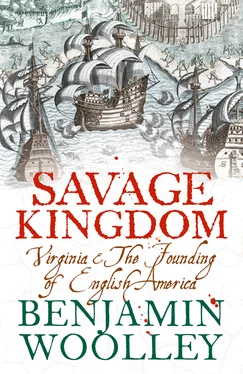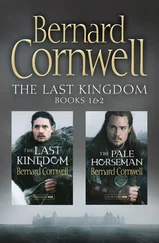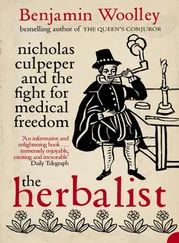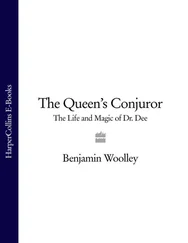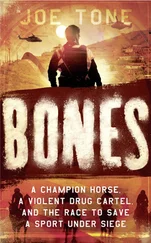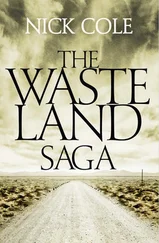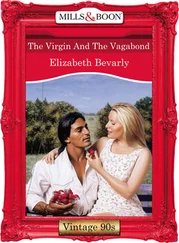The next stage in John’s life, according to his autobiography, was ‘his parents dying when he was about thirteen years of age’. They left him with ‘a competent means, which he not being capable to manage, little regarded’. 25 This is a curious passage, as both parents were very much alive when he was ‘about thirteen’: his father died when Smith was sixteen, and his mother many years later, having remarried.
His mind being ‘even then set upon brave adventures’, he was apprenticed to a merchant in King’s Lynn, Norfolk. Bondage to a master did not suit his restless spirit, and soon afterwards he tore up his seven-year indenture and headed off to find new adventures. This probably happened around the time his father died, and produced a rift with his mother, which would explain his decision to write both of them prematurely out of his life.
The elective orphan, free of family ties and the responsibilities of having to manage his father’s farm, went to the Low Countries. Unfortunately for Smith, his arrival coincided with a lull in hostilities, a side effect of Cecil’s peace treaty with Spain. This forced an early return to England. Smith then embarked on a tour of France in the company of Peregrine Bertie, the son of his father’s patron. Returning again to the Low Countries, and finding the opportunities for military glory still limited, he ended up in Eastern Europe, where war between the Holy Roman and Ottoman empires raged more reliably. Though the Holy Roman Emperor Rudolf II was Catholic, this was of no consequence to an English Protestant with military ambitions.
He enlisted with the battalion of a Slovenian warlord, and marched to Transylvania, on the front line of the war. There, during a siege, he claimed to have beheaded three ‘Turks’ single-handedly before the massed ranks of the opposing Christian and Muslim armies. For this act of bravery, the King of Poland granted him a coat of arms, the title of Captain and the status of ‘an English gentleman’.
He was soon after wounded during a skirmish with Tartars and taken prisoner. He and his fellow captives were sent to Axiopolis (modern Cernavoda), a market town on the banks of the Danube, and ‘sold for slaves, like beasts in a market-place; where every merchant, viewing their limbs and wounds, caused other slaves to struggle with them, to try their strength’.
A dealer bought the young soldier for a client in Constantinople, who turned out to be the beautiful daughter of a Greek noblewoman whom Smith called Charatza Trabigzanda (probably mistaking the Greek description of her as a girl from Trebizond). 26 She soon ‘took (as it seemed) much compassion on him’, but not yet being of age, and fearful that he would be sold on, sent him to her brother, a military official working near the Black Sea, ‘till time made her Master of her self’. But ‘within an hour after his arrival’, the brother commanded his servant to strip Smith naked, ‘and shave his head and beard so bare as his hand’ and place ‘a great ring of iron, with a long stalk bowed like a sickle, riveted about his neck’. After enduring several months of this treatment, Smith ‘beat out [his master’s] brains with his threshing bat’, stole his victim’s clothes, and made his escape along an ancient caravan route to Astrakhan. He vividly recalled a journey along this intersection of Asiatic trade, each crossroads being marked with a signpost showing the way to the Crimea with a crescent moon, to Moscow with a cross, and to China with a sun. Ending up in Prague, the capital of the Holy Roman empire, he embarked on another epic trek through Germany, France and Spain to the Barbary coast of North Africa, where he hitched a lift with French pirates. Narrowly escaping Spanish capture and being blown up by an on-board explosion, he returned to England. 27
It is not clear how Smith was introduced to the Virginia venture. At the time Gosnold was promoting the idea in London, he appears to have been staying with or near Robert Bertie at the Willoughby London residence in the Barbican. Robert’s father had shown an interest in the Roanoke venture, and he had family connections to both the Wingfields and Gosnolds, so Robert may have effected an introduction. 28
Whatever Smith’s credentials, he, like Newport and Gosnold, had at least made a name for himself in the world of military and maritime affairs. The same could not be said of two mysterious figures mingling among the assembled adventurers and planters on that November day. Smythe introduced them as John Ratcliffe and George Kendall. They were to take a prominent though as yet unspecified role in the forthcoming expedition, the assembly was informed. Nothing further was revealed about these men, other than perhaps the merest hint that their participation was non-negotiable, as they had been appointed at the personal behest of Robert Cecil himself.
BY LATE NOVEMBER 1606, preparations for the Virginia Company’s first expedition were well advanced. Edward Maria Wingfield had packed a trunk with reading material, together with ‘diverse fruit, conserves and preserves’, and dispatched it to Richard Crofts, probably a relative of the Herefordshire landowner and MP Sir Herbert Crofts.
Crofts lived at Ratcliffe, a hamlet on the north bank of the Thames. The stretch of river overlooked by his house was used to moor ships, and on 23 November the Susan Constant , the 170-ton flagship for the Virginia fleet, arrived, heavily laden with supplies for her forthcoming voyage. She was tied up alongside the Philip and Frances , and Crofts dutifully ensured that Wingfield’s precious trunk was safely stowed in one of the cabins. A consignment of clucking hens and a cockerel was also delivered, from which Wingfield hoped to breed a flock to provide himself, and possibly his associates, with fresh eggs and an occasional chicken for the pot once in America.
That night, the Susan Constant began to shift with the ebb tide. Being so heavily laden, she was difficult to control, and crashed against the neighbouring ship, damaging the Philip and Frances ’s bowsprit, sheet anchor and beak-head (defined by Captain John Smith as the part of the ship ‘before the forecastle, and of great use, as well for the grace and countenance of the ship, as a place for men to ease themselves in’). 1 When the master of the Philip and Frances boarded the Susan Constant to remonstrate with the crew, he claimed to find them ‘tippling and drinking’. 2
The Susan Constant suffered minor damage to two of her portholes, but she was soon patched up, and a few days later moved further downstream to Blackwall, where she was to rendezvous with her two companion vessels: the 40-ton Godspeed and the 20-ton Discovery . Of the three ships, only the Discovery , a small bark or ‘pinnace’, was actually owned by the Virginia Company. She was to remain in Virginia for use by the settlers, while the other two hired vessels would return to England, laden, it was hoped, with valuable commodities.
On 10 December, ten days before the ships were due to sail, the mission’s leaders were once again summoned to Philpot Lane, this time to receive their final ‘Orders and Directions’ from the Royal Council.
Newport was confirmed as admiral, having ‘sole charge’ of the venture while he was in Virginia. He was also given the box containing the list of names for the local council, which he was under orders to ensure remained sealed until the fleet arrived in America. Meanwhile, he was left to appoint the ‘captains, soldiers and mariners’ for the voyage. Reflecting his experience and prominent role in getting the venture off the ground, Gosnold was put in charge of the Godspeed while, to everyone’s surprise, the mysterious Ratcliffe was given command of the Discovery .
Читать дальше
